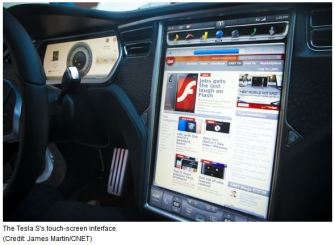By Ramesh Ramani, Founder and CEO, Expertus

Ramesh Ramani,
CEO,
Expertus
“Simplicity is the ultimate sophistication.”
–Leonardo da Vinci
500 years have passed since da Vinci, one of the world’s greatest visionaries, blended art and science in radical new ways. Yet even now, the rush toward sophisticated simplicity continues.
Case in point: today’s enterprise learning platform providers. In a spate of recent announcements, we hear that numerous vendors are revolutionizing their user experience.
This transformational wave is just beginning to unfold. What it means for learning organizations remains to be seen. However, I can’t help wondering: How can any platform vendor achieve true transformation by building upon legacy thinking and engineering? It’s a question that deserves closer attention.
Consumerization: The Next Big Thing
The motivation for this new “user first” imperative seems clear. It’s about the consumerization of information technology in the enterprise. As digital business expert, Aaron Shapiro, explains, “Users come in many different forms, but we all want the same thing. None of us want to spend a second wondering what to click on next. We just want it to be effortless.”
Meanwhile, the pressure on vendors continues to mount. “By the time young people who grew up with the Internet gain mainstream purchasing power, they’ll be even more reliant on digital and will have developed sky-high expectations.”
Lessons From Tesla
 Of course, these expectations reach far beyond the software realm. For example, consider the automobile industry. Tesla recently had its “iPhone” moment when introducing its impressive touchscreen dashboard. But for all of us who are eager to park a Tesla Model S in our garage, the attraction isn’t just about the 17-inch dashboard display, or the idea of owning a sleek, stylish electric vehicle. Truth is, we want that car because we want to experience a whole new adventure in driving.
Of course, these expectations reach far beyond the software realm. For example, consider the automobile industry. Tesla recently had its “iPhone” moment when introducing its impressive touchscreen dashboard. But for all of us who are eager to park a Tesla Model S in our garage, the attraction isn’t just about the 17-inch dashboard display, or the idea of owning a sleek, stylish electric vehicle. Truth is, we want that car because we want to experience a whole new adventure in driving.
Tesla’s elegance is enabled not only by breakthrough design thinking, but also by advanced, integrated technology that makes the entire Tesla experience streamlined and smart — inside and out. We want it because we want to support intelligent innovation. No matter how manufacturers may try to reinvent old combustion engine cars, they simply can’t compete with a vehicle that was designed from scratch to accomplish a very specific mission.
Another Example: Mercedes-Benz
Here’s another illustration from the automobile industry. The Mercedes-Benz brand is built on a history of design innovation, even with small details such as windshield wiper controls. Since the 1980s, Mercedes dashboards have featured only one “on/off” wiper knob for both front and rear window mechanisms. When the switch is “on,” the appropriate wiper automatically operates, depending upon whether the car is moving forward or in reverse.
Which user interface would you prefer — one knob or two? By consolidating wiper controls, Mercedes streamlined its dashboard and simplified the overall driving experience. But that kind of integrated functionality also requires advanced engineering under the hood.
Implications for LMS Design
These examples aren’t unlike the scenarios we face today with learning platform development. Consumerization is taking hold in business environments, bringing significant challenges and opportunities. As explained in “Top 10 Vendors That Get Consumerization of IT in the Enterprise,” established technology providers often struggle to fit “square pegs” (old-school software) into “round holes” (mobile and cloud technologies). But others who understand this massive shift are introducing products designed for a new era.
One early success is cloud storage and collaboration provider, Box. CEO Aaron Levie says that Box differentiation is about “building a product that can be delivered for the end user in a way that’s simple and collaborative and mobile … but also in a way that’s secure and scalable and integrated enough for IT.” Striking the right balance can be daunting, but Box is demonstrating that it can be done. The company has attracted 140,000 business customers, including 92% of the Fortune 500.
Today’s Problem Won’t Be Solved With Yesterday’s Answers
The goal at Box is similar to our own.
As I’ve said before, we are radically redefining the “learning management” concept at its core. It’s about meeting learners on their terms — at the moment they need support for diverse performance, development and knowledge-sharing activities. It’s about flexibility to serve a learner’s unique needs, as they continuously shift over time. And it’s about rethinking all aspects of the classic LMS infrastructure, so that cumbersome systems get out of a learner’s way.
Despite an abundance of industry chatter, learning and talent management vendors mostly remain slow at addressing these critical requirements. And that why we welcome the challenge. The future of enterprise productivity and performance at stake.
So the question remains:
How can any vendor truly transform a platform with legacy thinking and design? The rush to sophisticated simplicity is on.
Note from Ramesh: What are your thoughts about learner-centered design philosophy? And how is consumerization influencing enterprise learning? To see how the ExpertusONE LMS can support mobile learning across your organization, learn more at our website, watch the on-demand ExpertusONE Mobile mini demo now, or contact us anytime to discuss your needs and schedule a personalized demo.
Image Credit: Pixabay




Pingback: Learning Luminary Interview: John Leh, Talented Learning | Learning In The Cloud
Reblogged this on Life Experiences and commented:
Embracing the New World of Learning and the New World of Work
Pingback: ASTD: LMS Solutions and Shiny Stuff | Learning In The Cloud
Pingback: Choosing LMS Features: Why Less Is More | Learning In The Cloud
Pingback: Time For a Vacation From LMS Complexity? | Learning In The Cloud
Ramesh,
Great thought provoking blog.
I agree learner centered design is the key. It is more about legacy thinking than a legacy design. LMS providers can innovate by adopting an “open” learning philosophy and providing actionable learning analysis.
1) Operate in the paradigm that a learner should never again have to log into the LMS. Content should be accessed through the systems and tools they use daily. For example, when in Salesforce.com, learning related material appears for the sales process. Though it may be housed in an LMS/LCMS, the learner never knows it.
2) Make content available to search outside the LMS platform. For example, when searching from a browser, related LMS/LCMS content appears. (Similar to Evernote)
3) Embrace informal learning outside the LMS. For example, capture social learning where people are interacting (e.g. Yammer and Jive) instead of expecting the use of social tools inside the LMS.
4) Aggregate formal and informal learning data into the LMS wherever experienced or launched. For example, include results from courses taken from outside vendors like Lynda.com.
5) Move beyond reporting test scores and completions by providing actionable analysis within the LMS. For example, what path through learning did top performers take vs. lower performers, or who is in danger of failing if no intervention is offered.
The legacy design issue can be minimized by adopting the new Experience API (xAPI) learning technology standard and including a Learning Record Store (LRS) with the LMS. This enables open learning for learners and opportunity for actionable analysis for L&D. The bigger challenge for the LMS companies is changing legacy thinking.
@johndelano
john.delano@saltbox.com
Thanks for sharing your perspectives, John! Wholeheartedly agree that the ideal way to facilitate enterprise learning in all modes means supporting people “where they’re at” in their moment of need, and within their work context. Letting go of legacy thinking is no longer an option — it’s an imperative.